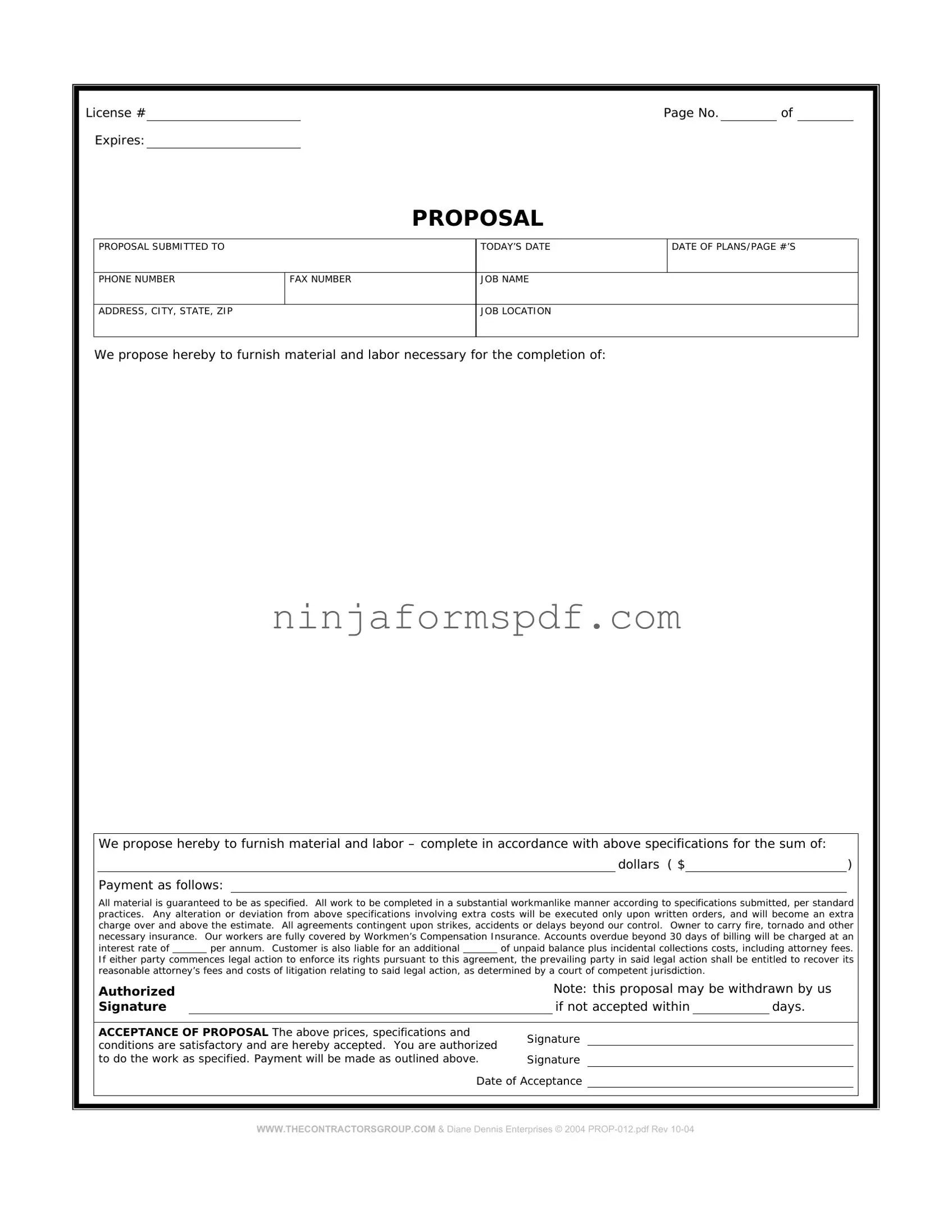A construction proposal form is closely related to a project bid proposal, primarily used when contractors intend to offer their services or bid for a specific project. Much like the construction proposal form, a project bid proposal outlines the scope of work, costs, and time frames. However, it focuses more competitively on pricing and why a contractor is the best choice for the project, often including a detailed breakdown of materials, labor, and other costs.
Another document similar to a construction proposal form is the contractor agreement. This legal document comes into play after the construction proposal is accepted, detailing the terms and conditions of the work to be performed. It’s more extensive and legally binding, covering aspects such as payment schedules, dispute resolution methods, and termination clauses, essentially specifying the hows and whats outlined in the proposal in legal terms.
The scope of work (SOW) document also bears resemblance to the construction proposal form. It provides a detailed description of the work to be done on a project. While the construction proposal form often includes a summary of the scope, the SOW delves into more detail regarding the specific tasks, deliverables, and timelines, offering a comprehensive explanation of each element involved in the project.
Change order forms are akin to construction proposal forms as they also deal with agreements and contractual obligations within construction projects. A change order form is used to document alterations to the original scope of work agreed upon in the construction proposal form, including changes in cost, timeline, or materials, thereby altering the contract terms as necessary.
A request for proposal (RFP) is a document that is somewhat of a precursor to a construction proposal form. Companies or clients use RFPs to invite contractors to submit business proposals for a specific project. Unlike the construction proposal, which is prepared by contractors offering their services, an RFP is prepared by the client outlining what they seek in a project. It sets the stage for contractors to create tailored construction proposals.
A cost estimate document parallels the construction proposal form in focusing on the financial aspects of a project. It delivers an anticipated total cost based on detailed calculations of materials, labor, equipment, and any other expenses. While a construction proposal includes a cost estimate as part of its content, a standalone cost estimate document delivers a more in-depth analysis of project costs.
The design brief is another document related to construction proposals, though it leans more towards the creative and planning aspects of a project. It outlines the vision, objectives, and specifics like themes, colors, and materials from the client's perspective. Contractors can use this information when drafting their construction proposal to ensure their suggested approach aligns with the client's vision.
Performance bonds are similar in context to construction proposals as they provide a financial guarantee that the contractor will fulfill their obligations as outlined in the proposal. It ensures that the contractor completes the project according to the agreement, safeguarding the client's investment. Although it's a separate financial instrument, its necessity and details often originate from discussions during the proposal phase.
The project timeline document, while not a proposal itself, complements the construction proposal form by offering a more visual and detailed schedule of the project's phases, milestones, and completion dates. It allows both the contractor and client to have a clear understanding of when different aspects of the project will be initiated and completed, ensuring everyone is aligned on expectations.
Lastly, the materials list is a document that, while less comprehensive than the construction proposal form, is crucial for planning and executing the project. It catalogs all the materials required for the project, including types, quantities, and specifications. This list ensures that the proposal's cost estimation is accurate and that the project is feasible with the available resources.

